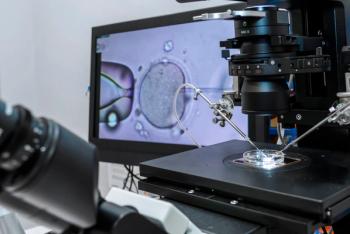
Can AI improve accuracy and efficiency of mammography?
A multicase study of artificial intelligence (AI) shows that adding the technology to assessment of digital mammograms may increase accuracy and efficiency of the readings.
A multicase study of artificial intelligence (AI) shows that adding the technology to assessment of digital mammograms may increase accuracy and efficiency of the readings. The
The aim of the research was to evaluate the impact of deep-learning AI system on identification of suspicious soft-tissue and calcified lesions in digital mammograms. For the study, 24 readers reviewed digital mammograms from 260 cases, including 65 cases with 66 malignant lesions and 65 biopsy-proven benign cases.
In one session, readers reviewed half the cases without AI and the other half with AI. In a second session, they reviewed complementary cases, so that every cases in the study eventually was reviewed by each reader both with and without AI. To minimize recall bias, the sessions were separated by a memory washout period of at least 4 weeks. The readers were also blinded to types of cases and were not aware of patient history, prior images, or acquisition site results.
The age of the women in the 260 cases ranged from 26 to 85 years and they were imaged between June 2012 and October 2017. Of the cancer cases, 64 had one malignant lesion and one case had both invasive ductal carcinoma with ductal carcinoma in situ (DCIS) and invasive ductal carcinoma. Invasive lesions were invasive ductal carcinomas (88%), invasive lobular carcinomas (10%) and invasive papillary carcinoma with DCIS (2%). Maximum lesions size in the cancer cases ranged from 0.1 to 6.0 cm, with a median of 0.9 cm for soft-tissue lesions and 1.4 cm for calcifications.
The AI system that was used outlines all lesions detected and that feature could be toggled on and off. It had been trained offline using an expertly annotated tomosynthesis image dataset collected independently. None of the images in the study were part of that dataset.
With use of AI, radiologist performance in detecting malignant lesions, as measured by mean area under the curve, increased 0.057 (95% CI, 0.028-0.087; P < .01), from 0.795 without the system to 0.852 with it. Reading time fell 52.7% (95% CI, 41.8%-61.5%; P < .01), from 64.1 seconds without to 30.4 seconds with AI. Sensitivity increased, from 77.0% without AI to 85.0% with it (95% CI, 2.6%-13.4%; P < .01). Specificity increased from 62.7% without to 69.6% with AI (95% CI, 3.0%-10.8%; noninferiority P < .01). Recall rate for noncancers also decreased from 38.0% without to 30.9% with AI (95% CI, 3.1%-11.2%; non inferiority P < .01).
The authors said they machine learning’s impact on patient outcomes to only improve as the systems are exposed to larger database while noting that “any strategy to achieve gains in clinical efficiency must not come at the risk of decreasing patient outcomes.”
Newsletter
Get the latest clinical updates, case studies, and expert commentary in obstetric and gynecologic care. Sign up now to stay informed.
















